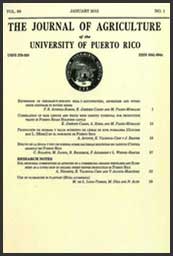Abstract
Common bean (Phaseolus vulgaris L.) is the most important edible grain legume in Ecuador. The Ministry of Agriculture, Cattle Raising, Aquaculture and Fisheries of this country estimated that 71,600 hectares were cultivated in 2012; of the sown area, 53% was dedicated to dry grain and the remaining 47% to fresh grain. Beans are an important source of income for farmers and food for thousands of Ecuadorian families. Crop performance and yield are affected by diseases such as angular leaf spot caused by Pseudocercospora griseola (Sacc.) Ferraris. The best alternative for disease control is to use resistant varieties. However, durability of field resistance will depend on the knowledge of angular leaf spot variability. In Ecuador, detailed and systematic studies on the variability of the angular leaf spot pathogen have not been conducted. For this reason, the pathogenic variability of 21 isolates of angular leaf spot, collected from the provinces of Carchi and Imbabura in the Ecuadorian Andes, was studied. Thirteen different pathotypes were identified, five of them showed compatibility with only the group of Andean differentials and the remaining eight showed compatibility with two groups of differentials (Andean and Mesoamerican). Race 63:0 was the most frequent and race 31:63 was the most virulent. None of the isolates were compatible with differential Cornell 49-242. Therefore, bean breeding lines in Ecuador would benefit by incorporating the Phg-2 resistance gene present in differential Cornell 49-242 .

